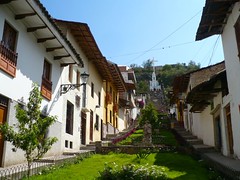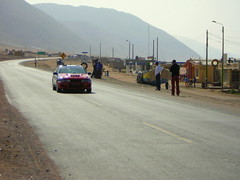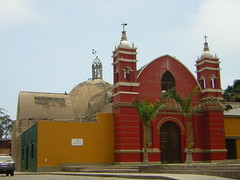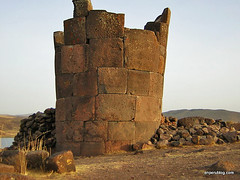Cajamarca
Set in the rolling green hills of the northern Peruvian Andes, Cajamarca is a land of history and tradition but also of carnival and music. The colonial city is a simpler, quieter and less commercialized version of Cusco, mostly free of tourism and all it brings, but with just as much to offer.
 |
I had been told to expect to love Cajamarca. It is beautiful, they said, it is fascinating, it is unknown to the bulk of tourists who stick to the south of Peru. It is traditional, it preserves everything that Cusco has lost, it looks similar to Cusco they said, but without the noise, the tourism and the commercialization.
It was all these things. It was also better than I was lead to believe.
Cajamarca is the name given to the region of which the city of Cajamarca is capital. The city is in the south, and it was here I spent my time traveling no more than 1 day away from the city. The department of Cajamarca is huge and there is plenty more for me to explore next time I return.
What we know of the region’s past is that the Inca conquest of Cajamarca came late in it’s history. A human presence has existed in the region for thousands of years, as evidenced by the pre-Chavin remains in Cumbe Mayo, where canals and petroglyphs have been carved into solid rock. Later, the culture for which the region was named, the Caxamarca, developed and interacted with the coastal cultures of the Moche and Chimú. By the late 1460’s when the Inca armies swept through under the control of Emperor Pachacutec the region already had a long history.
It was here too that the Inca empire began it’s road to destruction. The newly arrived group of Spanish lead by Francisco Pizarro, aiming to conquer the Inca empire, arrived in Cajamarca to be met by Emperor Atahualpa and his army. After tricking him into entering the city with only a light guard they captured him, ransomed him and killed him.
 |
Cajamarca went on the become an attractive Spanish colonial city surrounded by haciendas. The beautiful San Francisco church out-shines the unfinished cathedral on the opposite side of the green plaza, both buildings with exquisitely carved baroque exteriors. The colonial streets resemble those of Cusco, but without the visible Inca foundations. In fact, the only easily seen Inca remains are the famous ransom room where Atahualpa was held and the remains of Inca carvings on Cerro Apolonia, a huge hill that towers over the plaza.
It is from Cerro Apolonia that you can take in beautiful views of the city and surroundings from above, while also taking in the beautifully fresh air. The scenery is especially stunning as rain clouds push over the green hills in the distance.
The nearby Baños del Inca make a relaxing break from the sometimes tiring Andean journeys, where ‘nearby’ often means a 8 hour round-trip. These volcanic springs were Emperor Atahualpa‘s main reason for making his ill-fated stop on the long journey to Cusco. The hot waters are said to have all sorts of medicinal properties, but the are particularly excellent for stiff muscles and sore backs.
Nearby ruins were my main attraction though. Visiting Kuntur Wasi, one of many abandoned pre-Inca cities was a top priority, as was seeing some of the ancient cliff-face tombs.
Over the next dozen or so blogs, you’ll see some of the best of southern Cajamarca.
Photos –
Tags: cajamarca, carnival, caxamarca, colonial, cusco, spaniards




![Fujimori’s mega-trial draws to a close [Featured]](http://newsimg.bbc.co.uk/media/images/44791000/jpg/_44791276_fujimori_afp226b.jpg)





